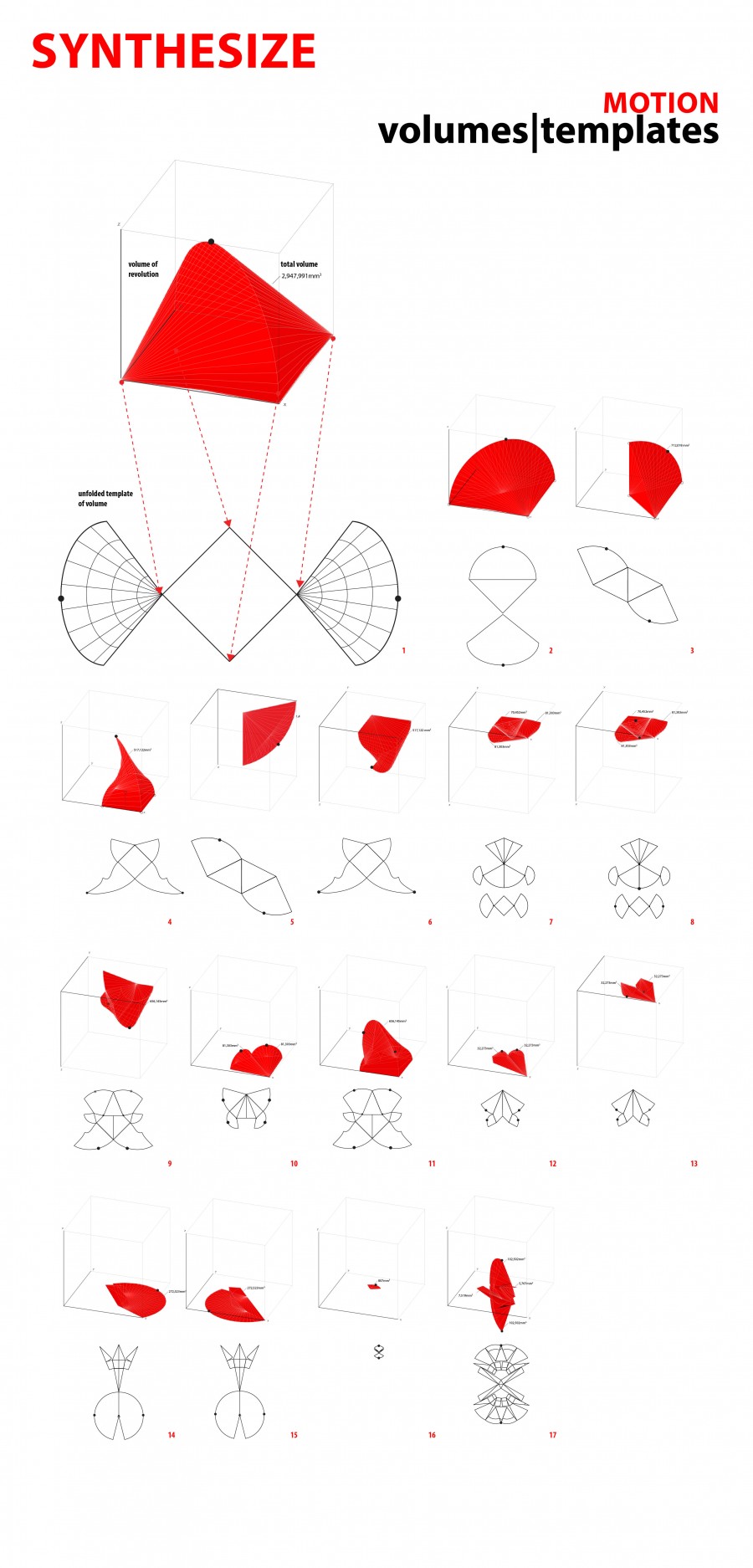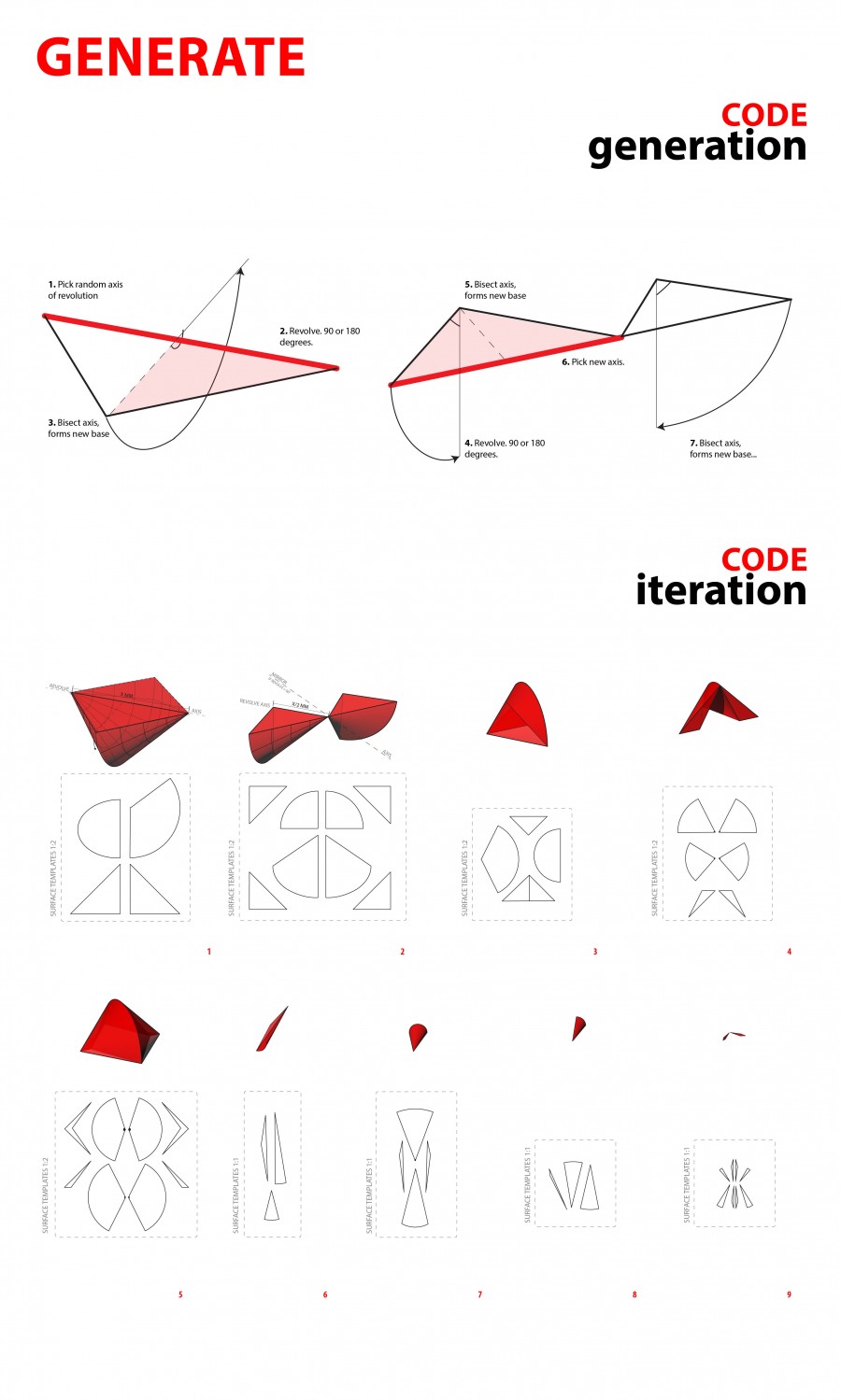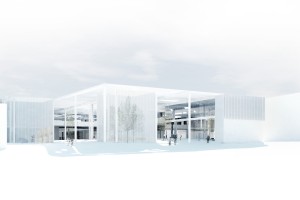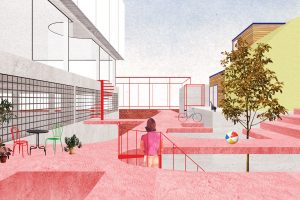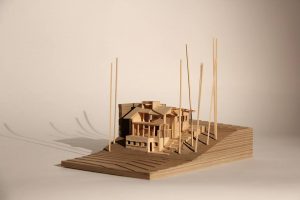Monday and Thursday are studio days. On these days in particular, the third floor undergraduate studio is filled with a frenetic energy of design, research, and exploration. Students can usually be found talking excitedly with design professors and classmates in a habitat saturated with trace sketches, study models, and empty coffee cups. Every week we’ll share a completed project, churned out from this energetic studio environment.
Interested in having your work featured on our STUDIO WORK Monday series? Check out our BRIDGE Contact page for submission details.
3B DESIGN OPTION STUDIO – System Stalker Lab
Folding | Origami Crane by Mona Dai & Trimira Garach
This project analyzes the motions in the folding of a paper crane. Each individual step in the process is abstracted to a series of markers, and then synthesized into a volume that represents the movement of the paper in that step. Finally, a Python code was written that generates new volumes in a sequential fashion according to certain rule sets inspired by data gathered in the previous steps.
Manifesto:
Folding a simple origami crane is an exercise that is both geometrical, and yet extremely tactile. With Folding, we aimed to deconstruct, synthesize and generate new forms from the movement of a piece of paper as it is being folded into a crane.
Deconstruct:
We broke the motions of folding into its geometric components. Each step was abstracted into the crease lines that were formed, the start and end locations of the point or points that were reflected about the crease lines, and the radius of reflection between the crease lines and the start and end points of motion.
The points and the crease lines were synthesized into a cross-section – the unique area of paper that was in motion in each individual step. The cross-section was then revolved about an arc derived from properties of the the start and end points of motion.
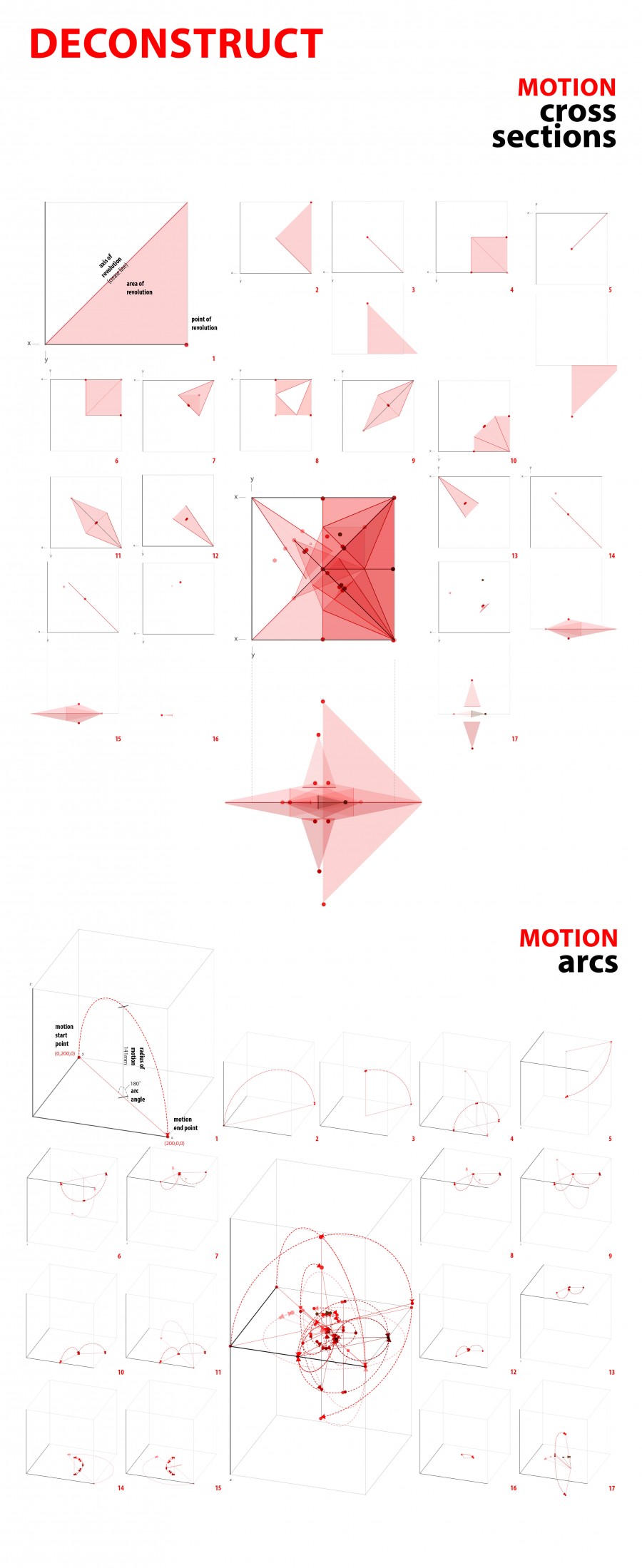
Synthesis:
From these arcs and cross-sections of movement, we derived a solid for each step of the fold process that traced the volume of space that the paper moved through as it.
We generated new folding templates for each solid, which act as indicators for the intricacy and complexity of each fold step. They are also in themselves new forms created, from in between the steps and folds of making a paper crane.
Generate:
Our Python code generates volumes of folding that transform sequentially. Similar to how a piece of paper grows smaller and smaller as it is repeated folded, our script creates solids of revolution that shrink in size as the number folds increases. Templates for folding each solid are also created, so that we can physically and tactilely fold a form that is iterated according to geometrical rules of transformation and motion.


